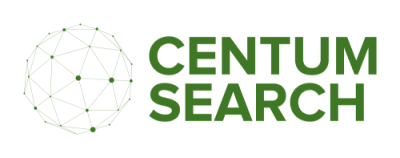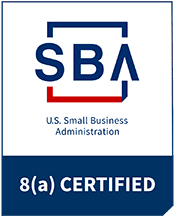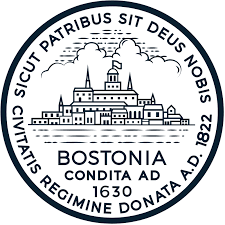2025 Startup Hiring Trends Every Founder & Talent Leader Needs to Know
How today’s most resilient startups are rethinking talent—from AI-powered workflows to fractional org design—to scale smarter in a cautious market.

2025’s Cautious, Calculated Hiring Market
The startup hiring playbook has changed.
In 2025, most early- and growth-stage teams aren’t hiring in hyper-growth sprints—they’re hiring with precision. After a volatile few years marked by layoffs, inflated headcounts, and funding recalibrations, both founders and VCs are applying a more disciplined lens to talent strategy.
Hiring still matters—but now with a stronger emphasis on resilience, runway, and ROI.
Startups are moving slower, evaluating needs more critically, and exploring flexible models like fractional leadership and contract contributors. There’s a growing expectation that every hire—especially on lean teams—should unlock outsized impact, not just fill a seat.
At the same time, candidates (especially experienced engineers and operators) are just as cautious. Many are asking tougher questions about stability, path to profitability, and exit strategy before signing on.
This new landscape is producing a key shift: the startups that treat hiring as a strategic advantage—not a last-minute scramble—are the ones building stronger, more durable teams.
AI Recruiting Is Here—But Human Touch Still Wins
AI has shifted from an optional tool to the foundation of many recruiting workflows. Startups are embracing platforms like Hireflow, SeekOut, and Fetcher to automate sourcing using real-time data, while tools like ModernLoop manage scheduling and feedback logistics across multiple stakeholders. A 2024 Gartner survey showed that 42% of HR leaders expect to increase investment in AI recruiting tools this year, primarily to reduce time-to-fill and alleviate recruiter bottlenecks.
That said, automation alone doesn’t deliver a great candidate experience. The startups seeing the best results are using AI to handle repetitive, low-touch tasks like resume screening and scheduling—while preserving genuine, human connection for moments that matter. Outreach, interviews, and closing conversations still benefit from a human touch, especially since candidates continue to judge companies based on how personalized and attentive their hiring process feels.
And candidate sentiment around AI in hiring? Still mixed. Surveys from Greenhouse, Blind, and candidate feedback on platforms like Reddit and Fishbowl reveal a clear theme: job seekers are generally open to AI when it’s used to streamline logistics or remove bias—but wary when AI feels like a black box deciding their fate. Candidates consistently say they want:
- Transparency when AI is being used
- Clarity around how they’re being evaluated
- Human interaction during key moments, especially interviews and feedback
In short, candidates don’t mind AI—they mind being ghosted by it.
The companies that win top talent in 2025 are those that use AI to speed things up, not replace the human element entirely.
Executive Hiring Is Slower, Riskier, and More Competitive
There are simply fewer of these roles available. Startup boards and founders are trimming executive headcount in favor of smaller leadership pods, and in many cases replacing full-time roles with fractional or advisory engagements. Search firms have reported a year-over-year drop in retained executive searches, particularly in Series A and B companies focused on extending runway.
To stay ahead, successful startups aren’t waiting until there’s a vacancy—they’re getting proactive. Some are partnering with executive search firms that specialize in their geography or sector, while others are building executive pipelines internally by nurturing long-term relationships. Engaging high-potential candidates early—as fractional leaders, advisors, or mentors—gives companies time to assess fit and alignment before a full-time need arises. Even lean teams under 20 employees are beginning to document basic succession plans to avoid scrambling later. Andreessen Horowitz calls this kind of “bench-building” a smart risk management strategy for startups under $20M ARR—and it’s quickly becoming a best practice in 2025.
Fractional Talent and Global Marketplaces Are Reshaping the Org Chart
The rise of fractional executives, global contractors, and independent specialists is no longer a stopgap—it’s a strategic response to the need for flexibility and expertise without long-term commitment. LinkedIn reported a 55% YoY increase in mentions of “fractional CTO” and “fractional CMO” roles in 2024, a clear signal that the core + flex team model is going mainstream.
Early-stage founders are increasingly testing this model with roles like fractional CMOs or VPs of Sales, especially pre–Series A, where burn and dilution are top concerns. Setting clear scopes and deliverables—often on a 90-day basis—helps manage expectations and ensures alignment from the start. Beyond cost, the biggest upside is access to global talent. A startup in Boston can now engage a developer in Bogotá, a recruiter in Manila, and a growth lead in Berlin—all collaborating asynchronously within the same sprint cycle.
Of course, this model isn’t without tradeoffs: hiring across time zones can introduce new challenges in communication, cohesion, and cultural alignment, so it’s critical to design workflows that balance flexibility with operational clarity.
Entry-Level Hiring Is Down—So Retention Has to Step Up
Entry-level hiring in tech has dropped more than 50% compared to pre-pandemic levels, according to data from Handshake and SignalFire. Many startups, operating with leaner budgets and teams, are opting for mid- and senior-level hires who can hit the ground running. But this shift leaves a critical gap in building future talent pipelines and can contribute to long-term skill shortages.
Among the most admired employers, Anthropic, OpenAI, and Stripe are taking a different approach, doubling down on internal development. Anthropic’s engineering team currently boasts a two-year retention rate of 80%, driven by clear internal mobility, growth paths, and a strong, mission-driven culture. For startups with limited resources, building a “grow-your-own” talent pipeline can be just as impactful. Even if you can’t run a large-scale new grad program, bringing on one or two interns or apprentices and rotating them across functions can build deep loyalty and accelerate onboarding over time.
Another proven strategy is introducing career check-ins every 90 days—not formal reviews, but intentional, forward-looking conversations about an employee’s goals, interests, and skill development. These conversations often surface blockers early, boost morale, and reinforce that long-term growth is possible inside your org.
Career Development Is a Startup’s Best Retention Tool
Even in a cautious job market, career progression is a top reason employees stay—or leave. According to LinkedIn’s 2024 Global Talent Trends report, “lack of career advancement” outranks compensation as the number one driver of attrition. This is good news for startups that can’t match Big Tech salaries but can offer faster growth, broader scope, and greater impact.
The most effective teams are making growth visible and attainable. Sharing a clear leveling guide internally helps employees understand what success looks like, how to move up, and when to expect new opportunities. Some companies are even using lightweight tools like Notion or Lattice to map career paths and align them with quarterly goals. When budgets are tight, offering learning stipends or subsidized online courses can signal investment in long-term development—without stretching payroll.
Ultimately, people don’t just want promotions. They want to see progress. Startups that make growth part of the culture will not only retain top talent but unlock higher performance in the process.
Final Thoughts
Hiring in 2025 isn’t just about growing headcount—it’s about designing teams that grow, flex, and stick. From AI tools to fractional leadership to career-pathing, startups that adapt to the current market—rather than reacting to it—will be better positioned to attract and retain talent in the long run.
Sources
- Gartner (2024) – 42% of HR leaders plan to increase investments in AI recruiting tools. Source: Gartner HR Survey 2024 – AI in Talent Acquisition
- SignalFire (2024) – Executive search timelines now average 5–6 months; entry-level hiring in tech is down 50% since 2019. Source: SignalFire Talent Trends Report 2024
- Andreessen Horowitz – Bench-building recommended for startups under $20M ARR as a proactive leadership strategy. Source: a16z: The CEO's Guide to Building a Great Team
- LinkedIn (2024) – Top reason employees leave is lack of career advancement. Source: LinkedIn Global Talent Trends Report 2024
- Handshake (2023–2024) – Entry-level tech roles are down more than 50% from pre-pandemic levels. Source: Handshake Early Talent Report 2024
- Anthropic (via SignalFire) – 80% two-year retention rate among engineers driven by internal growth strategy.
Subscribe to our newsletter!
Resources for Careers, Talent Acquisition and Management







